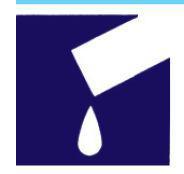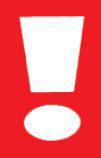SAS Urban Survival Handbook (17 page)
Read SAS Urban Survival Handbook Online
Authors: John Wiseman
Tags: #Health & Fitness, #Reference, #Survival, #Fiction, #Safety, #Self-Help, #Personal & Practical Guides, #General, #Survival Skills

Bacteria:
Those of diseases spread by contact with human excreta are the most serious risk, though contamination is comparatively rare. In areas where bacterial diseases such as cholera are endemic, local water should be avoided in favour of a safer alternative even though you may be likely to be more at risk when you go swimming.
Fluoride:
Most supplies contain minute amounts. There is disagreement about the safety of adding sodium fluoride to water supplies in some countries/areas. This is done at a level of about one part per million, primarily to increase children’s resistance to dental decay—and is effective at doing so.
Higher doses of fluoride during early tooth formation (possibly also because of fluoride dental treatments and fluoride supplements given to children) have been shown to produce a mottling of the teeth. This is common and only a cosmetic problem.
Opinion as to whether there is any long-term health risk is divided—even scientific assessments have come up with conflicting results. In Britain, very few water authorities add fluoride to their supplies. There may be a health risk if you ingest quantities of fluoride from other sources as well (toothpaste, for instance). In higher doses (upwards of ten parts per million), fluoride is more widely believed to be a health hazard.
Filtering water
Various filters are available. Some plumb directly into the drinking water pipe, others fit onto a tap. There are also two-part jug systems—tap water runs from a top section, through a filter, into a jug below. Most contaminants, including lead (but excluding nitrates), can be reduced or removed—but the replaceable filters work best when new. Decide for yourself whether the benefits outweigh the cost.
Hard and soft water
Hard water basically contains more calcium and magnesium than soft water. The water filters described are good at removing ‘hardness’ when the filters are fairly new, yet there is evidence to suggest that hard water is better for you in some ways. Hard water dissolves less lead from pipes—it coats them with limescale. Evidence suggests that there are more cases of heart disease in areas with soft water. If this is true, the reasons have yet to be made clear.
Hard water can damage plumbing systems by ‘furring’ up the inside of pipes and appliances. There are softeners which can be fitted to your system. The main one uses common salt to remove the ‘hardness’, another uses a magnetic field to prevent limescale forming. Again, these are not cheap options. If you only want a ‘softer’ bath, soda or bath salts will reduce scum and the amount of soap needed.
There are various commercial treatments to de-scale systems and appliances. Consult a dealer or plumber who will tell you if your system needs such attention.

WARNING
If you instal a sodium-based water softening device, it is advisable NOT to include the main drinking water tap. Drinking sodiumsoftened water all the time could add marginally to your body’s sodium levels. Also, removing all calcium from the water you drink may not be a good idea.
Boiling water/purifying tablets
Boiling water for several minutes should kill off most bacteria, which are not normally present in correctly-processed drinking water. This should only be necessary if there is a declared emergency, or if supplies are from a primitive source.
Water-purifying tablets are available, but these are only really intended for short-term use—while on holiday for example. Follow manufacturer’s instructions.
DOMESTIC SYSTEMS
 Before the water enters your premises, there is usually a heavy-duty stopcock (on/off valve) which is intended for use by the water company. Inside your premises, there should be another stopcock/gate valve so that the entire supply to your home can be isolated. Make sure you can operate this valve. In some areas there is also a meter, which registers the amount of water you have used.
Before the water enters your premises, there is usually a heavy-duty stopcock (on/off valve) which is intended for use by the water company. Inside your premises, there should be another stopcock/gate valve so that the entire supply to your home can be isolated. Make sure you can operate this valve. In some areas there is also a meter, which registers the amount of water you have used.
Indirect systems
The supply will feed at least one tap directly—this is your drinking water. The rest of the taps or appliances in your home are usually fed by a large tank containing 189 litres (50 gallons) or more. This tank is actually a large heavy cistern and is often situated in the loft space.
TANK/CISTERN
The height of the cistern above your taps and other outlets determines your internal water pressure. This is known as the ‘head of water’. The cistern is so heavy that it is important to check that the supporting timbers are strong enough and not deteriorating from rot or insect infestation.
The cistern should be protected from freezing by lagging. Loft insulation is not carried under the tank. Any warmth filtering up from the rooms below is useful to help prevent freezing.
Like most cisterns, this tank contains a floating ballcock which cuts off the intake when the desired level of water is reached. When you use water, the level falls allowing the ballcock to drop—opening the inlet valve—so more water enters the tank to refill it. Keep the tank covered and check that it’s clean and in good repair. Everything from rotting wood to dead birds and rats have been found in loft cisterns.
In indirect systems there is usually a sealed
hot-water tank
(keep well lagged)—usually in a cupboard, bathroom or kitchen. This heats water, either by an electric immersion heater (like an electric kettle), or by heat exchange from a coiled pipe inside the tank. This coiled pipe is fed with hot water by the central heating boiler.
Often, also in the loft, will be a
smaller cistern
which feeds water to water-filled central heating systems. Both hot water tanks and water-filled central heating systems require ‘
expansion pipes
’, which are open-ended to release bubbles and steam. These are usually allowed to drip back into the respective feed cistern. DON’T block these pipes. If a fault develops, water may boil in the pipes. Pressure MUST be allowed to escape.
All cisterns are fitted with an
overflow
or
warning pipe
(which drains through an outside wall) in case they overfill.
Direct systems
As water enters the premises, it feeds all the outlets in turn. Hot water is achieved by taking the water through a boiler—or, in some cases, there may still be a hot-water tank with an overhead cistern.
Scaling of pipes and appliances is more of a problem with direct systems in hard water areas. Water-filled heating systems are usually still fed by a cistern, and protected by an expansion pipe.
Which is best?
In indirect systems, most of the water is isolated from the mains supply—so if the water in the house becomes contaminated, it cannot syphon back and affect the mains supply. The pressure from the tank is constant—which is ideal for showers and other appliances which need to receive hot and cold water at roughly the same pressure.
Direct systems are easier to understand and may even be cheaper, but—apart from the possibility of limescale damage—special appliances and controls may be needed to avoid contamination of the mains supply.
You’re in control
You MUST know where every stopcock/gate valve is, to be able to isolate all or part of your system. If you trace your pipes, you will find valves to isolate feeds to and (in most cases) from loft cisterns. At the lowest point on most systems—not only central heating systems—there is usually a special drain-off tap, to which a hose may be fitted for speedy draining.
REMEMBER
It’s not enough to know where these stopcocks/gate valves are. You must check regularly that they are working efficiently BEFORE an emergency arises—which is exactly the wrong time to start learning about plumbing!
It’s a good idea to fit an isolating valve under EVERY tap or before every appliance to make it possible to perform routine maintenance—such as curing leaks and changing tap washers—without having to drain down the relevant parts of the system. Pumps on showers and central heating systems should always have isolating valves—or even proper gate valves—to allow regular servicing.
WASTE SYSTEMS
Waste pipes are now usually made of plastic, although older houses may still have lead or galvanized piping. All pipes carrying water away incorporate a trap—the U-bend, S-bend, P-trap or bottle-trap—which partially fills with water to prevent smells from the drains coming back into the house. In the toilet this is built into the fitment, but on other outlets it forms the first section of the piping.
In most houses all the wastepipes are connected to a single vertical soil pipe, which carries the water down to the drains and into sewers. This pipe is extended upwards to roof level where its top is left open to act as a vent for smells. It also prevents suction (produced by the pull of water running through the pipes) from drawing water out of any of the individual traps.
Sometimes WCs are connected to a soil pipe, while baths, basins and other wastes feed into a separate waste pipe. These pipes go to the sewers via a gully trap, into which external drains and rainwater run-off pipes also discharge.

WARNING
Cracked or broken drain inspection covers should be replaced. There is a risk of disease-carrying bacteria being released or carried away by flies. Debris may fall in and block the drain.
Cesspools and septic tanks
Even in cities there are sometimes premises not connected to a main sewer, either because they are very old properties predating the sewage system or because topography makes mains sewerage impossible.
A cesspool is a lined hole in the ground where sewage collects. When full it has to be emptied. It must be sealed so that sewage cannot escape and water cannot get in from surrounding ground. It should be childproof!
A septic tank is a small-scale sewage treatment system. Two chambers are usual. In the first tank, bacteria break down waste into a harmless liquid. The second is a filter bed. Sludge from a septic tank requires emptying in a city environment, but not as frequently as a cesspool (perhaps once a year instead of once a week or once a month).
DON’T use excessive quantities of disinfectants, bleaches or household detergents. If the bacteria in the chambers are killed you might slow down the reaction—clogging the tank.
COMMON PROBLEMS
Blocked wastepipes: First
attempt to remove the blockage with a suction-cup plunger, if there is water which won’t run away.
If the water has run away
, but very slowly, and there is a trap in the first section of pipe, open the trap. Hair, grease, food and other debris should be cleaned out and the trap reconnected.
If there is no trap
, just a loop in the pipe, and the water has gone, try a chemical drain clearer—following the manufacturer’s advice (see POISONS).